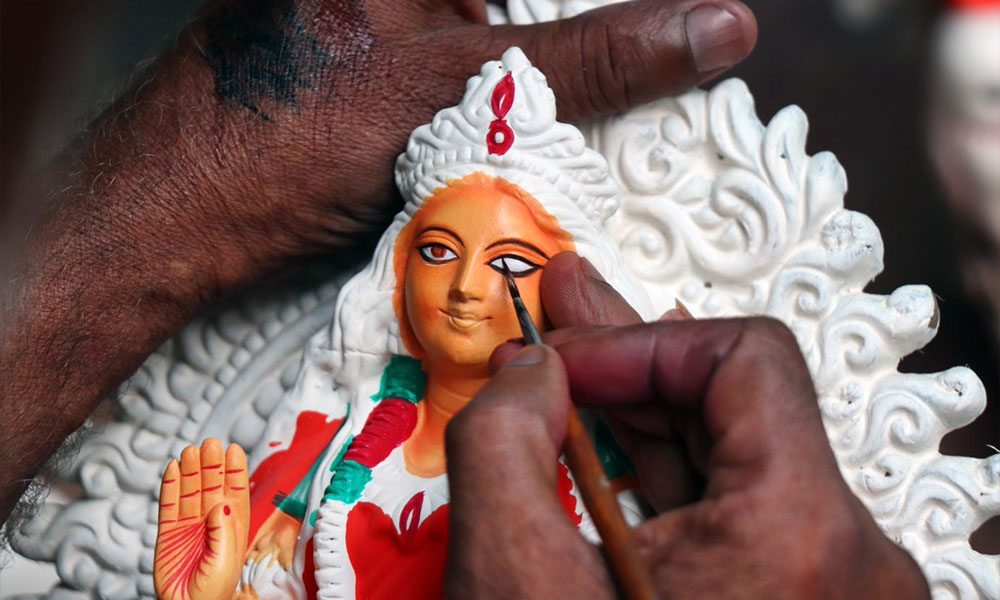Was it a castle from the pages of a Hans Anderson fairy tale? Or was it a temple? The pretty looking structure will leave you wondering until our car reached its gate. Built between 1801 and 1814, this five-story temple has thirteen pink-tipped towers and is known as the Hangsheshwari temple.
Virtually impinging on the backdoor of Kolkata, the district of Hooghly is a rich commercial zone that is also endowed with innumerable tourist attractions that can be reached by a short drive from the city. A Portuguese colony during the 16th and 17th centuries, the area contained several river ports, of which Saptagram was the most important. Today, little remains of the erstwhile colonial grandeur except for the old cathedral of Bandel. Less than 50 km from Kolkata, Bandel is the gateway to some of the attractions like the old ports of Saptagram (now renamed as Baneberries) and Hooghly.
Apart from the Hangsheshwari temple, the erstwhile palace compound also contains an even older terracotta temple. After seeing the temple, you can drive to see the Hooghly Imambara. About two kilometres from Bandel, the town of Hooghly (which also lends its name to the district) was a Portuguese trade port around the 16th century and gradually passed into the hands of the English East India Company in the next century. Built-in 1861, the Imambara contains a sun-dial and a high clock tower.
Known as the Bandel Church, the old Roman cathedral has a beautiful Doric façade. The riverbank adjacent to the church is choc-a-bloc with picnickers in winter.
The round trip to Bandel Church, Hangsheshwari temple, and Hooghly Imambara can be undertaken in a day from Kolkata. Bandel, nearly 40 km from Kolkata, can be approached by road and rail. It takes around an hour by train from Howrah station. There are private buses linking the region and one can even hire an auto-rickshaw from Bandel to visit the trio.
